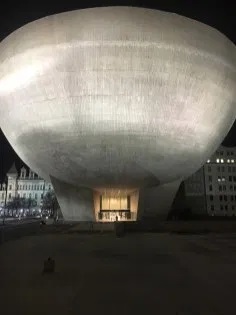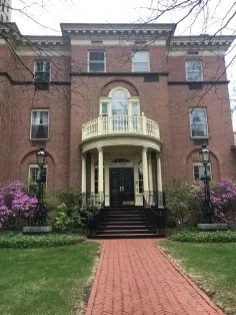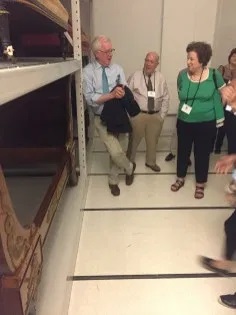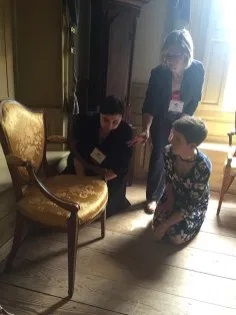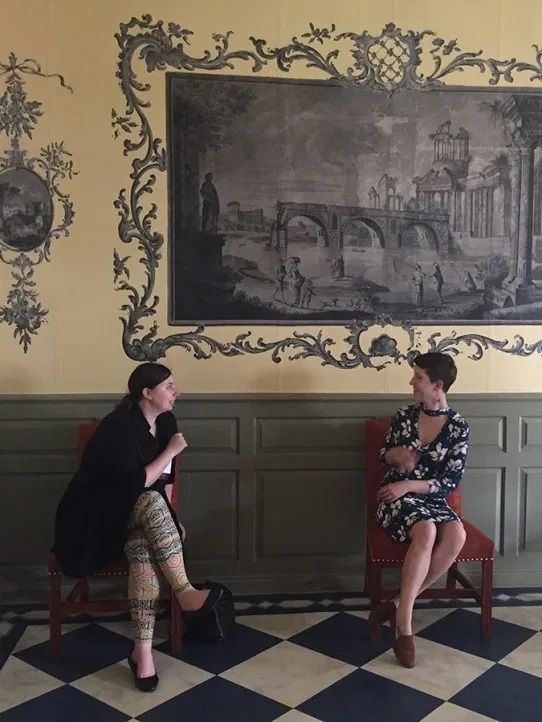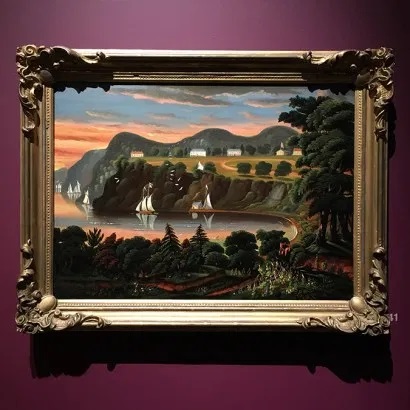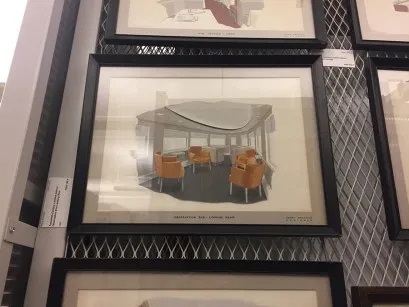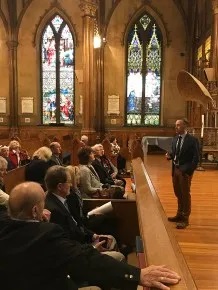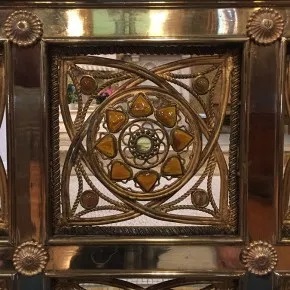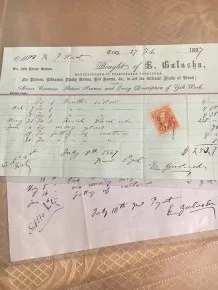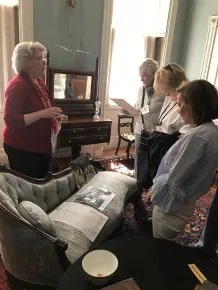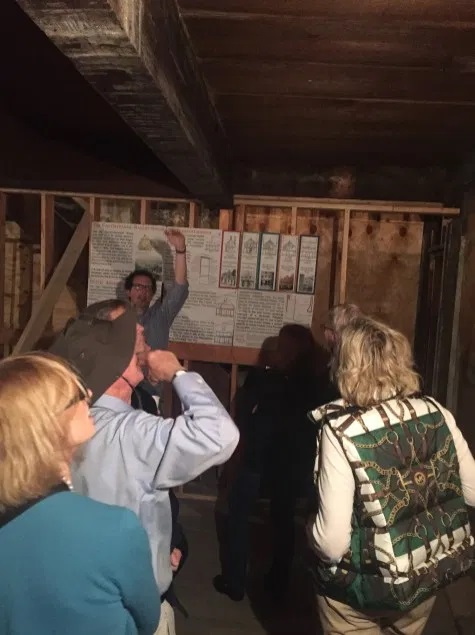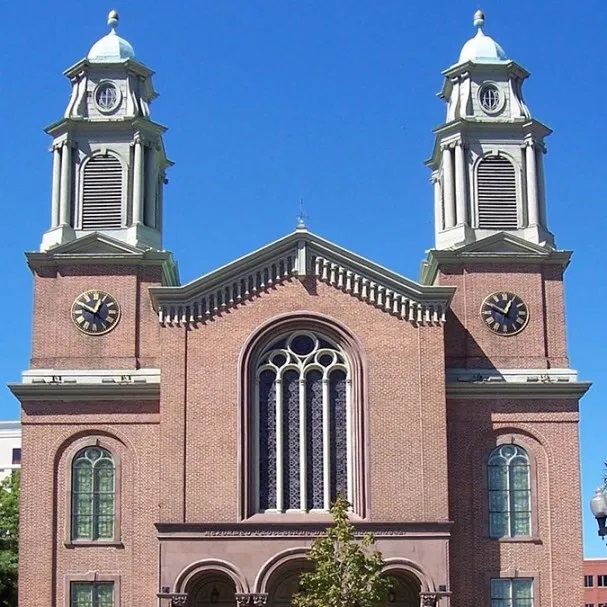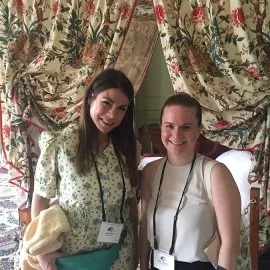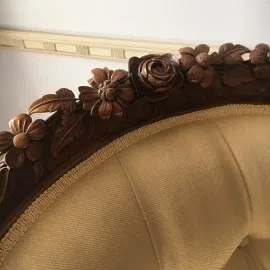The Upper Hudson: Four Centuries of Craft and Commerce
Among the oldest surviving European settlements in the United States, Albany and the Upper Hudson region boast a rich and often overlooked array of historic sites that illustrate the region’s economic importance to the development of the modern United States. Throughout the symposium, participants encountered sites introducing topics ranging from the Dutch fur trade to the Erie Canal, and from post-industrial urban renewal to the renovation of Colonial Revival historic house museums.
The program began with an introduction to Albany’s architectural history and development by City Historian Tony Opalka. While comparatively few traces remain of the original Dutch city, the Low Country influence remains in the original city plan and the fashionable 18th-century houses built after the colony’s handover to the British. Like many communities, Albany struggled with economic recession throughout the 20th century, and various development projects erased many historic neighborhoods. The symposium’s opening lecture and reception took place in the heart of the massive Empire State Plaza, an urban renewal effort of the 1960s and 1970s at the behest of Governor Nelson Rockefeller. Although the massive construction project modernized the city’s infrastructure and provided much needed space for the state government, it came at the cost of the destruction of several historic 19th-century neighborhoods.
Participants enjoy some time up close with the furniture of Charles-Honore Lannuier with Peter Kenny
Friday’s itinerary focused on the early history of Albany and its rise to national prominence. Former Trust Governor and Co-President of the Classical American Homes Preservation Trust Peter Kenny discussed the rapid development of cosmopolitan European cultural life in the area with the Dutch settlement in 1614. The area’s economic importance to the country increased with the opening of the Erie Canal, which according to historian Duncan Hay, became a major aspect of the region’s identity. After lunch at the historic Fort Orange Club, we visited three key sites in the city. The Albany Institute of History and Art, founded in 1791, is one of the oldest extant museums in the United States. Our guides, curators Doug McCoombs and Diane Shewchuk, brought participants up close and personal with the museum’s extraordinary collection during a special tour through collections storage and the galleries. Participants were treated to a close look at furniture by French-born New York cabinetmaker Charles-Honoré Lannuier, while Christian enjoyed the opportunity to briefly hijack the tour to show participants original concept sketches by industrial designer Henry Dreyfuss, the subject of his master’s thesis. Heidi Hill’s tour of Schuyler Mansion was a particular highlight of the day. Hill has overseen a vast restoration program during her tenure at the site, particularly in the lead up to the house’s recent centennial as a museum in 2017. Although work continues, the digital reproduction of Philip Schuyler’s “Ruins of Rome” wallpaper and replicas of the family’s back stools in the front hall offer visitors an immersive, tactile link to the house’s heyday during the American Revolution. Many took advantage of an opportunity to sit on the chairs—a rare opportunity at a historic site!
Saturday’s schedule brought participants across the Hudson River to Troy. Founded in the late 18th century, the city became an industrial center in the 19th century, making it one of the wealthiest communities in the nation. Economic depression through much of the 20th century had the fortuitous effect of preserving many fine buildings. In addition to touring a fabulous private collection, participants were wowed by the splendor of St. Paul’s church. The 1820s gothic structure was renovated and redecorated in the 1880s by Tiffany Studios. As one of the few surviving intact Tiffany interiors, it is a marvelous time capsule. Tiffany historian Josh Probert offered enlightening commentary on the church’s decorative program and significance.
An additional highlight of our time in Troy was our visit to the Rensselaer County Historical Society and the Hart-Cluett House. A rare survivor, the interpretation of this early-19th-century townhouse is strengthened by astounding archival material discovered by RCHS board member Dough Boucher packed away in a long-forgotten trunk. Participants were able to view receipts from talented local furniture maker Elisha Galusha, whose Rococco Revival designs are popular among local collectors. The Hart family kept meticulous records of their purchases, including many from Galusha, that were displayed along with the extant furnishings they document.
A crash course in architectural archaeology at the Van Ostrande-Radliffe House, Albany’s oldest surviving building
In the afternoon, participants chose between two of tours of Albany’s historic districts. An excursion to the Capitol Hill neighborhood included a visit to the collections storage of the New York State Museum with Curator Connie Frisbee Houde and Curator Emeritus John Scherer before exploring the Masonic Lodge and State Capitol. Other participants chose to investigate archaeological excavations at the city’s oldest surviving house, the Van Ostrande-Radliffe house of 1728, followed by a walk along the historic Pearl Street district ending at the First Reformed Church, designed by renowned Albany architect Philip Hooker.
Developments in historic preservation and interpretation are ongoing throughout the Upper Hudson region, and we enjoyed updates on recent findings during our Sunday lectures. Local independent scholar Britney Schline Yatrakis, the Marie Zimmermann Emerging Scholar Lecturer, shared new research on the collaboration between women and jacquard weavers in upstate New York in the designs of coverlets. Siena College professors Jennifer Dorsey and Robin Flatland concluded the program with a discussion of their collaborative project with the Stephen and Harriet Myers Residence, the home of an African-American abolitionist family that served as a stop on the Underground Railroad. Their work involves outreach in the local community and will use virtual reality technology to help interpret the space.
Although Albany may is often overlooked, the symposium introduced Trust members to fascinating sites and exciting research on the spectacular public and private collections. We look forward to equally exciting programs in the coming months, including our special one-day program at Drayton Hall and fall symposium in New Orleans!
About The Decorative Arts Trust Bulletin
Formerly known as the "blog,” the Bulletin features new research and scholarship, travelogues, book reviews, and museum and gallery exhibitions. The Bulletin complements The Magazine of the Decorative Arts Trust, our biannual members publication.








